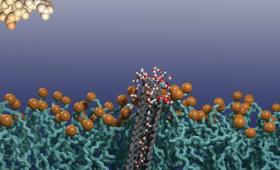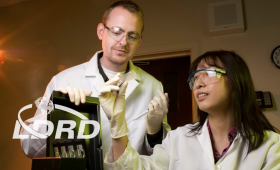Researchers have discovered an efficient mechanism for laser ablation that could help pave the way to the use of less costly lasers in many industrial laser processing applications.
Science and Technology Highlights

An international team has found the answer to a 50-year-old puzzle that explains why beta decays of atomic nuclei are slower than expected.

Investigators have found a technique to reduce the uncertainty in predicting future change.

Livermore researchers have developed a new biological sensor that could help clinicians better diagnose cancer and epilepsy.

Livermore launched a new initiative focused on sharing solutions with local communities to help them develop a sustainable, resilient and affordable energy infrastructure.

A research team has learned how the digestive system of a wood-eating beetle serves as a natural mini-reactor for biofuel production.

Researchers have 3D printed live cells that convert glucose to ethanol and carbon dioxide gas (CO2), demonstrating a technology that can lead to high biocatalytic efficiency.

A research team has developed a novel system for recording widespread brain activity,

We created this new video animation to explain how the Advanced Radiographic Capability (ARC) laser works.

Veterinarians and agricultural inspectors can now turn to a newer, faster and less expensive biological detection system.

